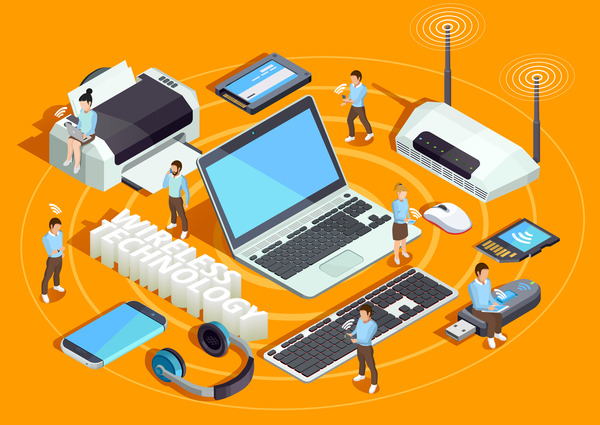What are Computer Networking Devices?
September 21, 2023

In today’s digitally interconnected world, computer networking devices play a pivotal role in ensuring seamless communication and data exchange. From the moment we log onto the internet to send an email, stream a video, or access a website, networking devices are working behind the scenes to make it all happen. In this article, we’ll take a closer look at what computer networking devices are, how they function, and the essential roles they play in modern technology.
Understanding Computer Networking
Before diving into the devices themselves, it’s essential to understand the concept of computer networking. Computer networking involves connecting multiple computers, devices, or systems to share data and resources, such as files, printers, and internet access. This interconnected web of devices relies on a variety of hardware components, each serving a specific purpose.
Let’s explore some of the key computer networking devices:
Router:
A router is often considered the central hub of a network. It connects different networks together, such as your local area network (LAN) to the internet. Routers use a combination of hardware and software to determine the best path for data packets to travel from one network to another. They also provide network security features like firewall protection.
Switch:
Switches are devices that facilitate communication within a local network. They operate at Layer 2 (Data Link Layer) of the OSI model and use MAC addresses to forward data to the appropriate device on the network. Unlike hubs, switches are more intelligent and efficient in managing network traffic.
Hub:
Hubs are basic networking devices that operate at the physical layer of the OSI model. They simply broadcast data packets to all devices on the network, regardless of whether the device needs the data or not. Hubs have become less common due to their inefficiency in managing network traffic.
Access Point (AP):
Access points are used to extend wireless networks. They allow wireless devices, such as laptops and smartphones, to connect to a wired network. Access points are often integrated into wireless routers, making it possible for devices to access the internet wirelessly.
Modem:
A modem, short for modulator-demodulator, converts digital data from your computer into analog signals for transmission over traditional telephone lines or cable systems. It’s essential for connecting your home or business to the internet.
Firewall:
Firewalls are crucial for network security. They act as a barrier between your network and potential threats from the internet, filtering incoming and outgoing traffic to prevent unauthorized access and malware infections.
Bridge:
Bridges are used to connect two or more network segments and filter traffic between them based on MAC addresses. They are often employed to extend the range of a network or to segment a large network into smaller, more manageable parts.
Gateway:
A gateway is a device or software application that connects two different networks with different protocols. It translates data between the two networks, allowing them to communicate effectively.
Computer networking devices are the unsung heroes of our digital age, enabling the seamless flow of information and connectivity that we often take for granted. From routers that connect us to the internet to switches that manage our local networks, each device plays a critical role in ensuring our devices can communicate effectively.

